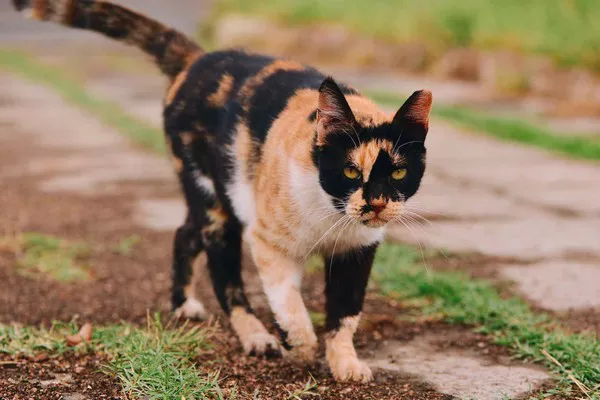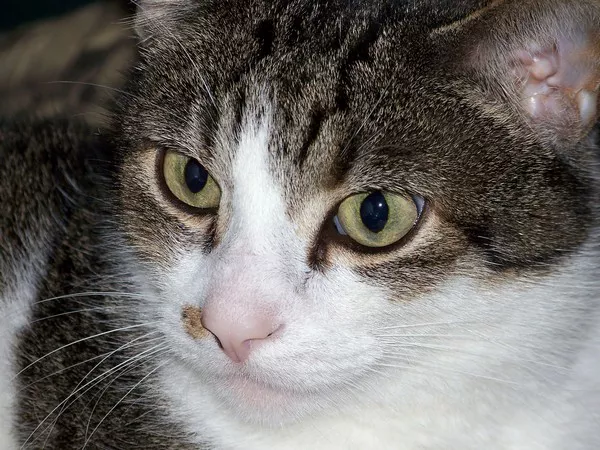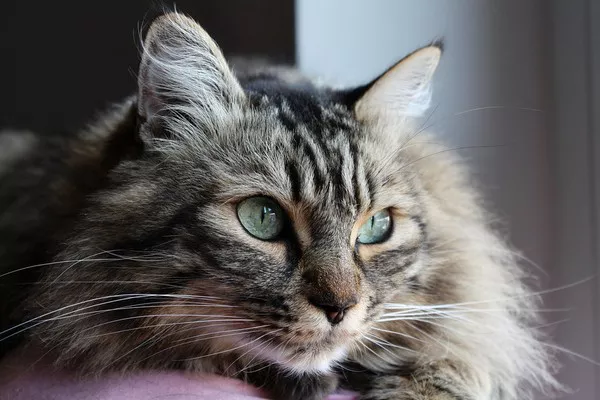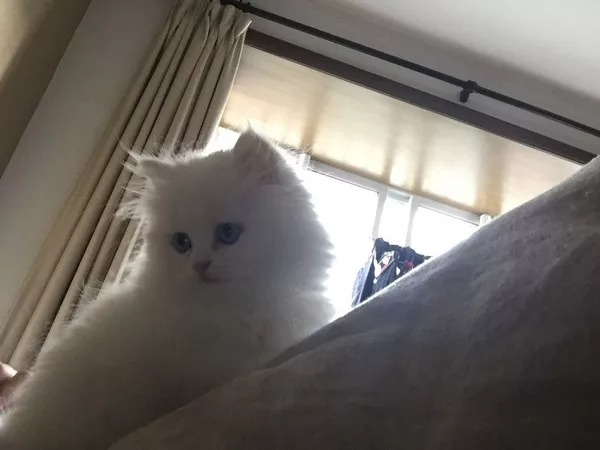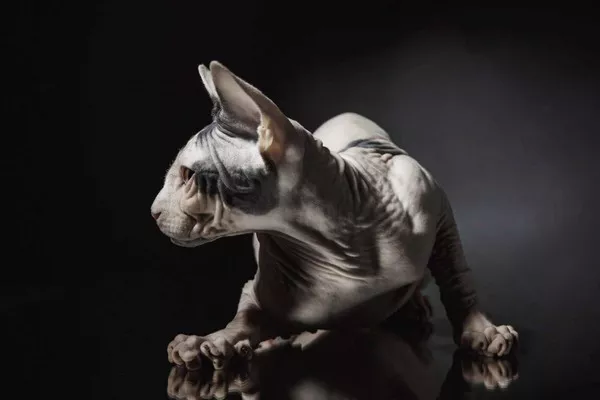Humans have long been captivated by the mysterious allure of cats. From the ancient Egyptians who revered them to the modern cat-video enthusiasts, our fascination with feline companions knows no bounds. Leonardo da Vinci even described them as “a masterpiece.” Yet, beneath their cute exterior lies an enigmatic world that ranges from whisker fatigue to potential mind control. In this exploration, we unravel 19 intriguing facts that provide a glimpse into the strange lives of our feline friends.
Decoding the Tail Language
Cat behaviorist Lucy Hoile unveils the secret language of a cat’s tail. A friendly cat will approach with a “question mark” tail, held up with a curl at the top, resembling a question mark. This subtle communication offers insights into their mood and intentions.
Purring Mysteries
While we may associate purring with contentment, it turns out that cats purr for various reasons. Hoile suggests decoding your cat’s purr – a high-pitched and urgent purr may indicate a desire for attention or food, while a low-frequency, rhythmic purr signifies happiness. Astonishingly, cats also purr to aid self-healing, with studies indicating potential benefits for bone density.
Mind Control Wonders
Delving into the realm of mind control, it’s revealed that cats may wield influence over rodents through the parasite Toxoplasma gondii. Infected rodents lose their fear of cats, and even after the infection clears, their brains are permanently rewired. Could cats exert similar control over humans? Around a third of humans carry T. gondii, with potential links to increased dopamine levels and, controversially, an elevated risk of developing mental health conditions.
Swift and Agile
Astonishingly fast, cats can reach speeds of up to 30mph. Anita Kelsey, a cat behaviorist, emphasizes their agility, quick bursts of speed, and rapid changes in direction, making them efficient predators. However, this efficiency has raised concerns about their impact on native species when introduced to new environments.
Hissing as Communication
Contrary to a common misconception, a hissing cat isn’t necessarily aggressive. Hoile explains that hissing is a warning signal, urging the intruder to retreat. It’s a cat’s way of saying, “I will attack if necessary, but I’d prefer not to.” Hissing is not a sign of hostility but rather a polite request for space.
Cats and Mental Health
Similar to humans, cats can experience anxiety, known as Pandora syndrome. Vet Ellie Lee notes its physical effects, including stress-induced cystitis. Notably, cats exhibit individual preferences for social situations, emphasizing their flexibility as a species but unique needs as individuals.
Feline Blood Transfusions
In emergencies requiring a blood transfusion, cats can receive blood from dogs, but only once. Lee explains that cats develop antibodies against dog blood, leading to fatal reactions upon subsequent transfusions. The scarcity of donated cat blood highlights the challenges in feline medical care.
Smelling Through Their Mouths
Cats possess a unique organ, Jacobson’s organ, in the roof of their mouths. Lee describes how cats use this organ to analyze unusual smells by lifting their lip, resembling a smile. This mechanism allows them to smell through their mouths, providing a fascinating insight into their sensory world.
Whisker Fatigue and Unique Whiskers
Tactile vibrissae, commonly known as whiskers, play a crucial role in a cat’s sensory perception. Lee emphasizes the importance of not cutting a cat’s whiskers, as they are sensitive and aid in environmental exploration. Wide, shallow food bowls are recommended to prevent whisker fatigue, an irritation caused by contact with bowl edges.
Dual Set of Whiskers
Beyond their facial whiskers, cats have another set on the backs of their front legs, known as carpal whiskers. These provide essential sensory feedback related to prey and hunting, enhancing a cat’s hunting instincts and control.
Multipurpose Paws
Cats’ paws serve multiple functions, from cooling through sweat glands to marking territory with scent glands. Kelsey explains that watching where a cat chooses to scratch can guide owners in providing appropriate surfaces for marking.
The Curious Case of the Cat Penis
In a surprising revelation, Hoile shares that a cat’s penis is covered in spiky barbs, stimulating ovulation in females after mating. Neutering is recommended not only for population control but also to spare female cats from the physically painful experience of mating.
Solo Hunting Expeditions
Despite living with other cats, felines are notorious for solitary hunting. Hoile dispels the myth of sharing prey, emphasizing that cats, unless providing for kittens, prefer to enjoy their catch alone.
Collarbone Absence
Cats lack a collarbone, contributing to their remarkable flexibility and agility. Kelsey explains that the absence of rigid collarbones allows cats a greater range of motion in their front limbs, enabling their exceptional climbing and jumping abilities.
Primordial Pouch
Lee sheds light on the “primordial pouch,” a saggy tummy some cats develop due to fat pads in their groin. Also called a primordial pouch, it expands with weight gain, a characteristic more common in domestic cats than their wild counterparts.
Miaowing as Communication
Contrary to popular belief, cats don’t commonly miaow at each other. Lee reveals that miaowing is primarily a form of communication with humans. Understanding the nuances of these vocalizations can deepen the bond between cats and their human companions.
In conclusion, the complex and mysterious lives of cats continue to captivate and intrigue. From their silent tail messages to the intricate purposes of their paws, each revelation brings us a step closer to deciphering the enigma that is the feline world.

